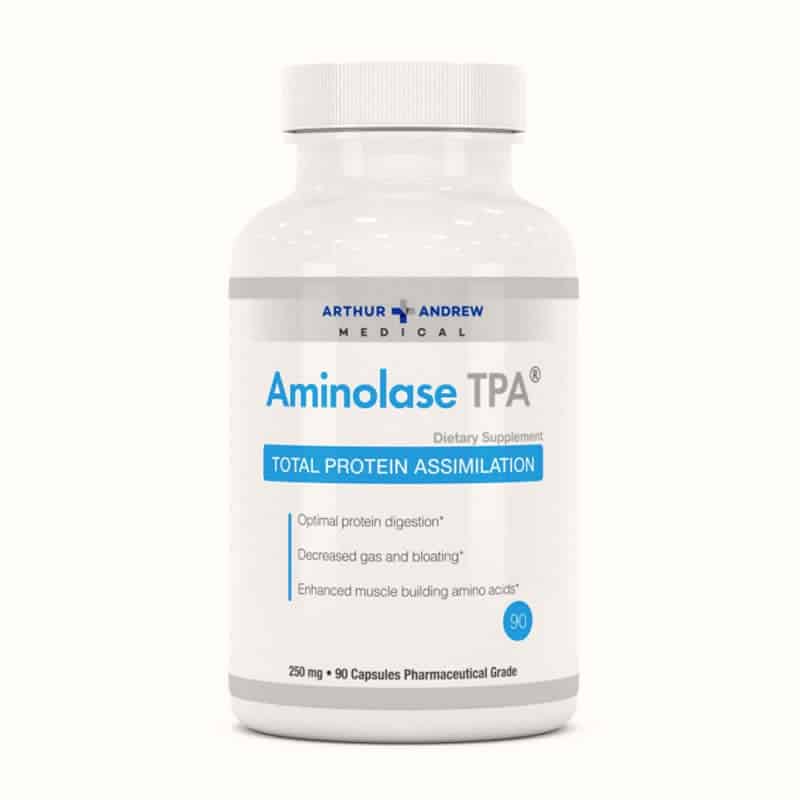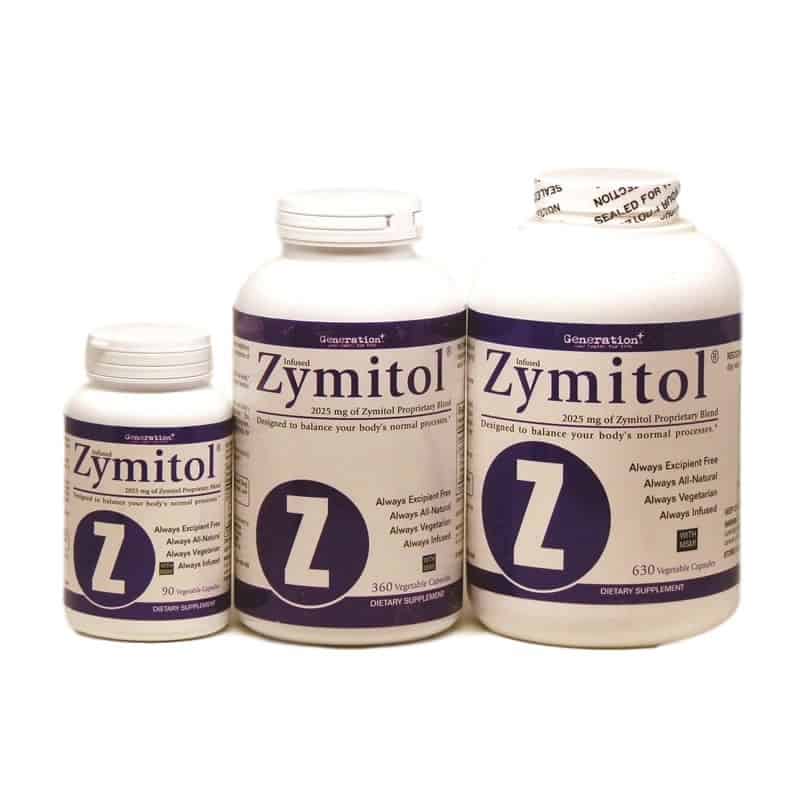No products in the cart.
Amino Acids: Key Supplement
Awareness of the need for protein supplementation has been gradually evolving. As proteins are involved in all aspects of the body’s complex chemistry, it is not surprising that many individuals develop protein metabolism problems. Efforts to cope with these problems have included the dietary usage of glandular concentrates, powdered and liquid protein supplements and high protein diets, but economical availability of Free Form Amino Acids and the recognition of their value as daily maintenance supplements are relatively recent developments. This paper presents the clinical evidence and deductive logic which together have resulted in the development of Applied Kinesiological tests and a pair of optimal (highly efficient) Free Form Amino Acid dietary supplements. Case histories are presented.
Affluent Malnutrition and Cellular Hunger
For the past half century the role of vitamins and minerals as dietary necessities has been recognized. The need for amino acid supplementation is only gradually becoming understood. As Braverman puts it, “We have harvested the vitamins and minerals as healing nutrients, and are just beginning to harvest the amino acids, which are even more important.” (1, 2)
Dr. Abram Hoffer states: “The classical deficiency diseases … have been replaced by a more subtle pervasive group of diseases of malnutrition due to deficiencies of vitamins and minerals combined with a surplus of calories from the sugars and a deficiency of food fiber. Hunger is no longer a problem; chronic diseases from affluent malnutrition is. There is another form of malnutrition – cellular hunger. The body is unable to metabolize food properly because of a deficiency of nutrients even though caloric intake is adequate and often more than adequate. Medical schools have ignored nutrition and the role of modern nutrition (or affluent malnutrition) in the causation of a large number of chronic degenerative diseases.” (3)
His terms “Affluent Malnutrition” and “Cellular Hunger” are perceptive. We believe these concepts apply as well to the all too frequent need for supplemental AMINO ACIDS even among people who are eating a seemingly mare than adequate amount of high quality proteins. (4) This article describes the processes through which we identified the problem and zeroed in on the optimum solution.
Background
Through the years, efforts have been made to correct nutritional deficiencies by supplying extra proteins. These supplements have taken various forms. Protein concentrates in liquid and powder forms and with varying protein formulations have been tried. All protein (or high protein) diets have been, and still are, sometimes recommended. In some cases these have been helpful; at other times they have caused severe problems. Because of limited space we shall not comment on these.
One particular group of supplements does warrant brief discussion. Glandular concentrates have been offered as a method of supplying materials needed by their corresponding human glands and organs. It was presumed that these concentrates were of particular value because they supplied the appropriate assortment of amino acids and other components needed by their human equivalents. While this argument may have some logical appeal, laboratory analyses indicate this to be a very inefficient method of supplying amino acids. As shown in the chart, the amino acid percentages from several samples, when compared with their unprocessed counterparts vary greatly. The greatest variance of the charted samples is the heart. In the original organ, amino acids make up 80% of the dry weight while the concentrate contains but 0.5% of total amino acids! (5)
Clinical Observations:
For many years, back disorders have been treated by chiropractic and medical methods. Subluxations have been adjusted and herniated disks removed. Disk lesions (defined as “Any degenerative change in the inter-vertebral disk that has progressed to a sufficient degree that some physical evidence of it can be detected”), have been viewed as random unfortunate occurrences. Our thinking began to change in 1984 with the introduction of our BEV tests (a new Applied Kinesiology diagnostic technique) which clearly indicated that disk lesions are often multiple and clustered in a patient’s spine. From this we inferred that the problem was most likely related to a general breakdown of the patient’s connective tissue (collagen). This concept was subsequently confirmed by CT scans, thermography, Magnetic Resonance and Chemical Laboratory tests.
When we started nutritional supplements along with chiropractic corrections, we experimented with various products then available. These included protein powders and some of the glandular concentrates. Later we found that several free form amino acid formulas gave better results with even the relatively modest daily amount of 3 to 4 grams. The available Free Form Amino Acid products had widely divergent formulations and costs. Since it seemed likely that these supplements would have to be used over long periods of time (6), we set forth to determine what were the principles involved in their use and what might be the most efficient method of delivering these materials.
Basic Principles Of Protein Utilization
In searching the literature on protein utilization, we found the following principles as being well established and recognized by authorities in the nutrition field:
1. Dietary proteins are not used directly, but must first be digested and thus broken down into their amino acid constituents. The protein molecules are huge by comparison and are not absorbed through the mucosa of the intestines. (7, 8) This is one of the reasons that efforts to use proteins and glandular concentrates often meet with little success.
2. Amino acid absorption:
a. The amino acids are rapidly absorbed through the intestines. Their rate of absorption is limited by the much slower process of digestion.(9)
b. Upon absorption they are carried rapidly to cells where they are transformed into cellular protein for storage. (10) The vehicle for transport is the blood plasma. The amino acid proportions of blood plasma differ significantly from the amino acid profiles of either the food proteins or the various body tissue proteins. The blood plasma amino acid proportions vary throughout the circadian cycle, but remain within their regular limit ranges. (11) It thus appears pointless to try to target delivery of matching amino acid patterns by ingesting animal counterparts for body tissues suspected of being protein deficient.
c. In order for the body to use dietary proteins, all of the essential amino acids must be present in the gut in the right proportion and in adequate quantities at the same time. If even one Essential Amino Acid is lacking, then the utilization of all others is reduced in direct proportion to that deficiency! The body can not retain incomplete proteins or polypeptides. The excess amino acids above the level of the Limiting EAA are deaminated and metabolized as energy sources only. (12, 13, 14, 15, 16)
3. There is a large pool of amino acids within the body that is readily available for use by any tissue that has a need. This pool is normally replenished by the blood’s supply of amino acids. The blood, in turn, draws from other tissues to make up for what has been used. (17, 18) Therefore, the blood’s profile of amino acids remains relatively constant even at the expense of the body’s structural materials if the supply through dietary sources is inadequate for any reason. It is thus apparent that blood tests do not provide a reliable early warning indication of amino acid deficiencies.
4. The effectiveness of a dietary protein is measured by its Net Protein Utilization (NPU) ratio. This measures the overall percentage of utility, combining the body’s normal ability to digest the protein as well as its ability to convert the resulting amino acids into useable body proteins. Animal derived proteins are known as high quality proteins. Meats, poultry, and cheeses have NPU’s in the range of 65 to 7596. Fish and milk are around 80%. Hen’s eggs are rated at 9486. The protein in brown rice and oats is also of good quality with NPUs of 65% to 70%, but the quantity (% protein) in these grains is low compared with animal sources. In general, vegetable proteins are known as incomplete proteins because one or more of the amino acids is deficient. (19, 20)
5. Excesses of some amino acids can produce results as detrimental as deficiencies. (21) Balance in the use of amino acids is of the greatest importance. (22)
6. Nutrient supplementation is a matter of experience as well as trial and error. A conservative approach is recommended (23)
The Formulas
With the foregoing summary of basic principles, the formula definitions are easily recognized. The lowly hen’s egg provides the pattern for both. (24, 25, 26, 27) The full scale, or Broad Spectrum supplement, is in the proportions of the full complement of amino acids in hens’ eggs, adjusted to 750 mg. tablet units. (28, 29) The Essential Amino Acid Group supplement follows the same proportions for the included components adjusted to 500 mg. tablet units. In the Essential formulation there are twelve components rather than the eight often defined as the “essentials”.
The extras, histidine and arginine, are included because there is a sufficiently large proportion of the population who cannot anabolize these in sufficient quantities; they are recognized as contingent amino acids. We also included cystine and tyrosine, as they are recognized as belonging with their counterparts, methionine and phenylalanine. (30) We believe these formulas represent the most efficient, most cost effective vehicle for delivering dietary amino acid supplements. Clinical testing with more than twenty subjects has confirmed the ability to maintain protein adequacy at lower supplementation levels than with any other commercially available product tested.
Application Recommendations
Use the Broad Spectrum formula for all new patients. Start with a minimum of 4 (750 mg.) tablets per day until protein balance is achieved. Individuals’ needs vary widely. (31, 32) In some cases it may be necessary to double or even triple the minimum suggested to achieve balance. After balance has been achieved, it is usually possible to continue at a maintenance level with Essential Group formula. Again the recommended starting minimum is 4 tablets per day, but this time it is with 500 mg. units. Here, also, individual differences may call for a continuing maintenance level of anywhere from 2 per day to 8 or more per day. Occasionally it may be necessary to revert to the Broad Spectrum formula for maintenance.
Tests To Determine Need For Amino Acid Supplements
The most, direct and simplest tests for amino acid deficiencies are the following Applied Kinesiology (AK) test procedures. These may be confirmed by several laboratory tests if desired.
VOLL POINT Tests. Therapy Localize (T-L) all three Voll Points on right foot. (See chart) Dr. Voll identified the right foot as the pancreas meridian and the left as the spleen. We renamed the points for brevity and clarity. As most new patients are neurologically disorganized (switched) a positive finding on the left foot Voll points (along with a positive Gland Scan) may also be construed as an amino acid deficiency. To perform this test, place a finger on one point at a time, testing with the right tensor fascia muscle. Usually all three will react the same, but not always. If ANY test positive, this indicates a need for Amino Acid Supplement.
HYPOGLYCEMIC Test (HOG). Left leg extended and raised 45 degrees. Test for strength. Weakness indicates need for AA Supp. This test has been verified in 19 out of 20 subjects via standard Glucose Tolerance Test.
GLAND SCAN Test. Therapy Localize (TL) using Neuro LympHatic points and alarm points; it is not necessary to test the individual muscles at this time. The sex glands, adrenals, thymus, thyroid VOLL POINTS parathyroids (directly TL) and pituitary are rapidly accomplished. Most new patients test positive on this, but quickly (within a week) turn negative with AA Supp.
CATEGORY 1 LEFT P. Inability to maintain Category 1 correction indicates need for Amino Acid supplementation. P is for protein or pancreas.
LABORATORY TESTS: 24 hour Urine: pH above 6.5 and/or any presence of Indican along with low calcium (Sulkowich) indicates need for Amino Acid supplements which immediately aid gastric, pancreatic and intestinal digestion.
STANDARD BLOOD TESTS. Total Protein, etc. We do not find these tests to be useful since the body will maintain serum Amino Acid levels long after serious Amino Acid deficiencies are detectable in the gland scans and manifested as disk lesions (i.e. collagen deterioration).
Conclusion
More than 90% of the patients who come to our offices for examination are found to be deficient in amino acids available for protein formation. It is our standard practice to order them to take a Free Form Amino Acid supplement for five to seven days before starting physical corrections. The case histories attest to the effectiveness of this procedure.
References
- Eric R. Braverman, M.D with Carl C. Pfeiffer, M.D., pH.D, The Healing Nutrients Within (New Canaan, CT: Keats, 1987), p. viii.
- Leon Chaitow, N.D., DO., M.B.N.O.A.. Amino Acids in Therapy (Rochester, VT: Thorsons, 1985), p: 42.
- Jeffrey Bland, pH.D, ad., Medical Applications of Clinical Nutrition, (New Canaan, CT: Keath, 1983), p. 223.
- Chaitow, pp. 12, 19, 31.
- U.S.D.A. Agriculture Handbook Number 8 13, Composition of Foods: Beef Products, (Washington, D.C.:Gov’t Printing Office, Rev. Aug. 1986) pp. 352 363.
- Chaitow p. 24
- Arthur C. Guyton, M.D., Textbook of Medical pHysiology, 7th ad. (PHiladelpHia: W.B. Saunders, 1986) p. 794.
- Florence Moog, pH.D., “The Lining of the Small Intestine;” Scientific American, (November, 1981), pp. 154 176.
- Guyton, p. 794.
- Dorothy A. Jones, Claire Ford Dunbar and Mary MarmoII Jirovec, Medical SurgicaI Nursing (New York: McGraw Hill, 1978, p. 536.
- Hans J. Bremer, Marinus Duran, Johannis P. Kamerling, Hildegard Przyrembel, Sybe K. Wadman, Disturbances of Amino Acid Metabolism: Clinical Chemistry and Diagnosis, (Baltimore Munich: Urban & Schwarzenberg, 1981), pp. 203 204.
- Richard N. Podell, M.D., MPH, “Nutrition;” Encyclopedia Americana, 1982, XX, 565 566.
- Frances Moore Lappe, Diet for a Small Planet, 10th Anniv. ad. (New York: Ballantine Books, 1982), p. 173.
- Marian Arlin, The Science of Nutrition, 2nd ed. (New York: Macmillan, 1977), pp. 83 84.
- Eric D. Wills, Biochemical Basis of Medicine (Bristol: Wright, 1985), pp. 250 251.
- Chaitow, pp. 27 29.
- Wills, pp. 246 247.
- Podell, p. 565.
- Ibid., p. 566.
- Lappe, pp. 174 178..
- Arlin, p. 88.
- Stuart M. Berger, M.D., Dr. Berger’s Immune Power Diet, (New York: New American Library, 1985), p. 230.
- Chaitow p. 24.
- Braverman, pp. 340 341.
- Lappe, p. 178.
- Nevin S. Scrimshaw and Aaron M. Altschul, ads., Amino Acid Fortification of Protein Foods (Report of an International Conference held at MIT Sept. 16 18, 1969), (Cambridge, MA, MIT Press), pp. 258 259.
- Douglas M. Considine,P.E., and Glenn D. Considine,eds. Foods and Food Production Encyclopedia (NewYork: Van Nostrand Reinhold, 1982), p. 63.
- Nutrition Almanac, 2nd ad., by Nutrition Search, Inc. (New York: McGraw Hill, 1984), p. 256.
- Heimo Scherz and Gustav Kloos, Food Composition and Nutrition Tables 1981/82, 2nd ad. (Stuttgart: Wissenschaftliche Verlagsgesellschaft mbH 1981), pp. 134 135.
- Braverman and Pfeiffer, p. 6.
- Bland, pp. 42 44.
- Lappe, p. 182.







